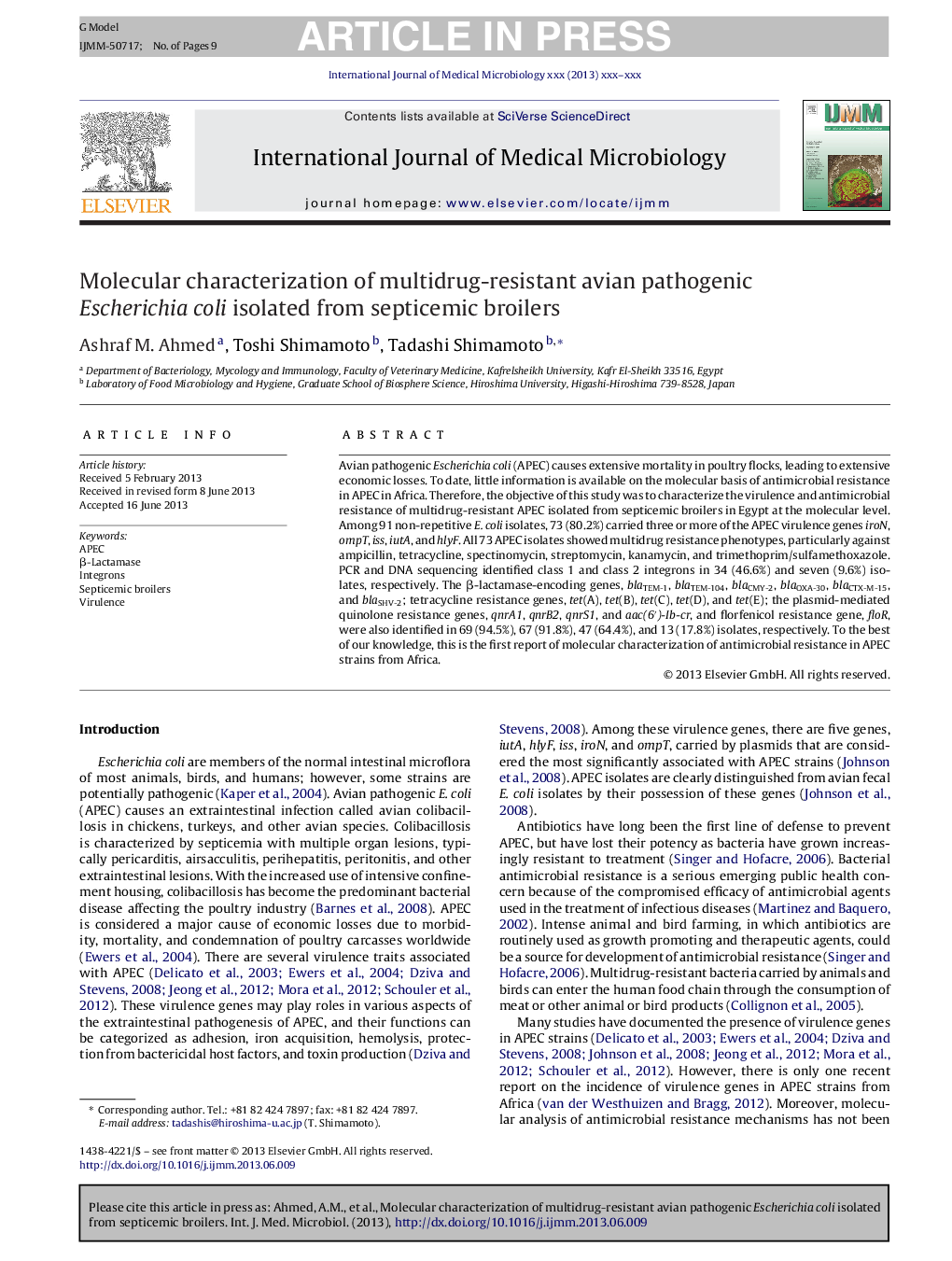| Article ID | Journal | Published Year | Pages | File Type |
|---|---|---|---|---|
| 8385810 | International Journal of Medical Microbiology | 2013 | 9 Pages |
Abstract
Avian pathogenic Escherichia coli (APEC) causes extensive mortality in poultry flocks, leading to extensive economic losses. To date, little information is available on the molecular basis of antimicrobial resistance in APEC in Africa. Therefore, the objective of this study was to characterize the virulence and antimicrobial resistance of multidrug-resistant APEC isolated from septicemic broilers in Egypt at the molecular level. Among 91 non-repetitive E. coli isolates, 73 (80.2%) carried three or more of the APEC virulence genes iroN, ompT, iss, iutA, and hlyF. All 73 APEC isolates showed multidrug resistance phenotypes, particularly against ampicillin, tetracycline, spectinomycin, streptomycin, kanamycin, and trimethoprim/sulfamethoxazole. PCR and DNA sequencing identified class 1 and class 2 integrons in 34 (46.6%) and seven (9.6%) isolates, respectively. The β-lactamase-encoding genes, blaTEM-1, blaTEM-104, blaCMY-2, blaOXA-30, blaCTX-M-15, and blaSHV-2; tetracycline resistance genes, tet(A), tet(B), tet(C), tet(D), and tet(E); the plasmid-mediated quinolone resistance genes, qnrA1, qnrB2, qnrS1, and aac(6â²)-Ib-cr, and florfenicol resistance gene, floR, were also identified in 69 (94.5%), 67 (91.8%), 47 (64.4%), and 13 (17.8%) isolates, respectively. To the best of our knowledge, this is the first report of molecular characterization of antimicrobial resistance in APEC strains from Africa.
Keywords
Related Topics
Life Sciences
Biochemistry, Genetics and Molecular Biology
Biochemistry, Genetics and Molecular Biology (General)
Authors
Ashraf M. Ahmed, Toshi Shimamoto, Tadashi Shimamoto,
